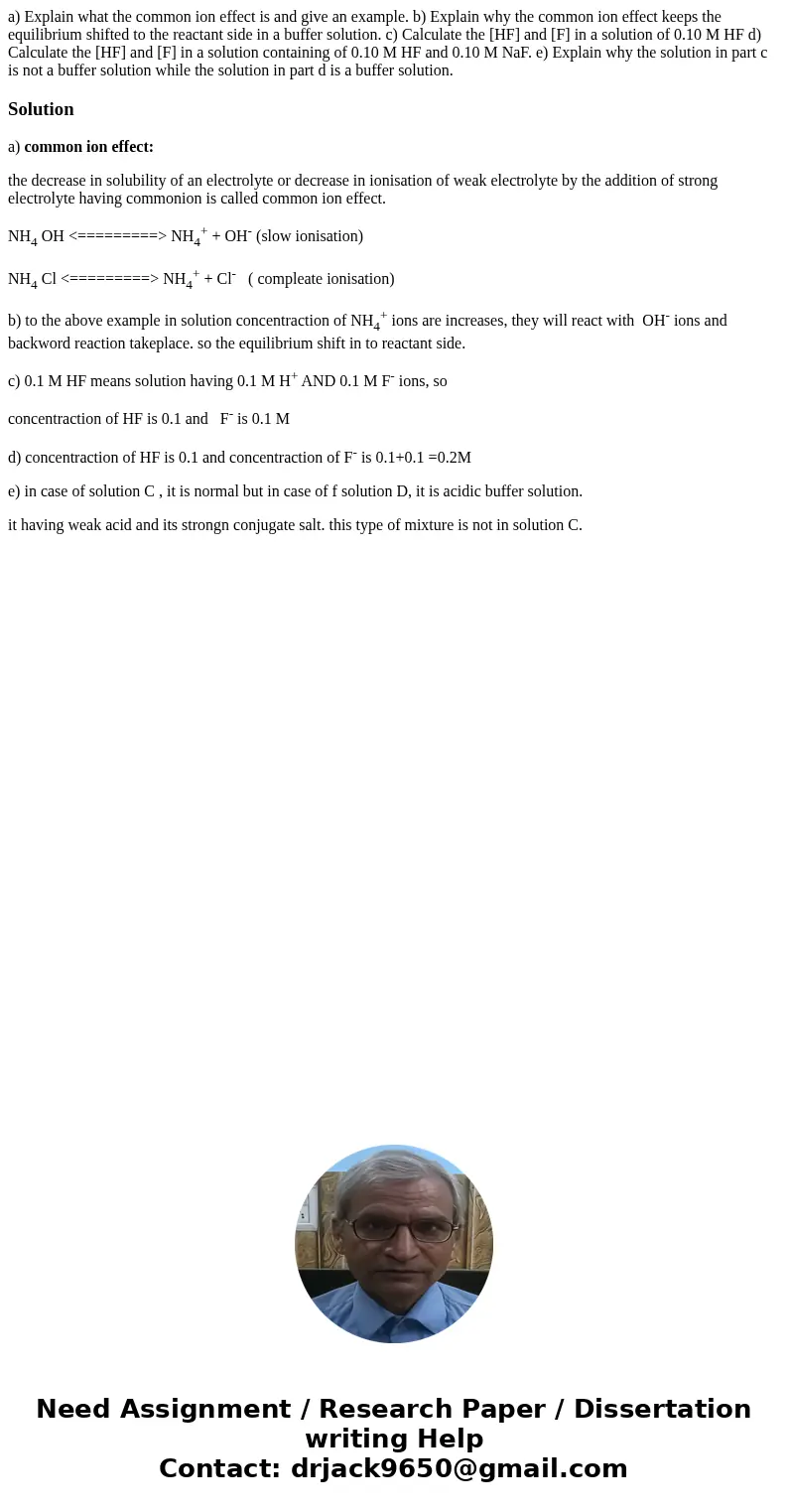a Explain what the common ion effect is and give an example
Solution
a) common ion effect:
the decrease in solubility of an electrolyte or decrease in ionisation of weak electrolyte by the addition of strong electrolyte having commonion is called common ion effect.
NH4 OH <=========> NH4+ + OH- (slow ionisation)
NH4 Cl <=========> NH4+ + Cl- ( compleate ionisation)
b) to the above example in solution concentraction of NH4+ ions are increases, they will react with OH- ions and backword reaction takeplace. so the equilibrium shift in to reactant side.
c) 0.1 M HF means solution having 0.1 M H+ AND 0.1 M F- ions, so
concentraction of HF is 0.1 and F- is 0.1 M
d) concentraction of HF is 0.1 and concentraction of F- is 0.1+0.1 =0.2M
e) in case of solution C , it is normal but in case of f solution D, it is acidic buffer solution.
it having weak acid and its strongn conjugate salt. this type of mixture is not in solution C.

 Homework Sourse
Homework Sourse